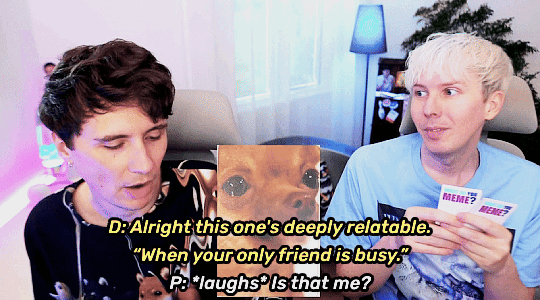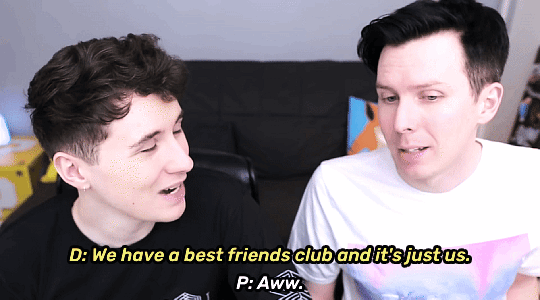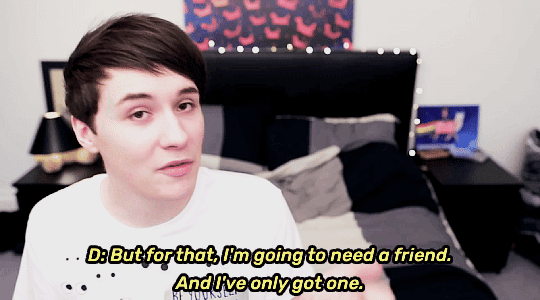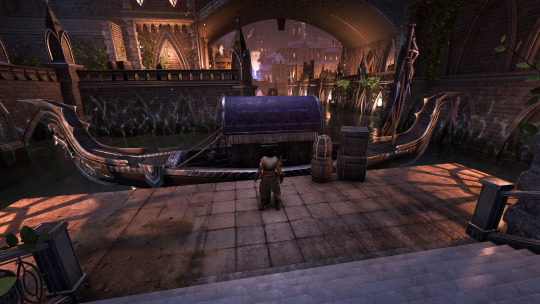#article search
Explore tagged Tumblr posts
Text
Signal-boosting this, especially for any long-time Sheith folks from 2016-19: Donya Abrams, the writer who wrote everything Voltron for the website Hypable, is searching to see if anyone saved the text for one of her articles: https://www.hypable.com/voltron-shiro-lgbt-disability-importance/
She has the rest, but this one got lost when she had to replace her computer and Hypable failed to reach out to her directly before shutting down their servers. Wayback doesn't have a capture. If anyone happens to have it, please ping me!
(Also, this is my reminder to go through that window of tabs open to VLD articles and save them as well.)
17 notes
·
View notes
Text

#paintball#Wikipedia#Islam#when you search this on google the article for paintball equipment comes up#and theres a part of this in the description area#but when you click on the article it isnt there#inb4 someone decides to be whatever about it
585 notes
·
View notes
Text
>"cluster b demonization isn't real! you're just making that up because you're attention seeking and wanna be a victim!!!"
>open internet browser
>"how to defeat narcissists" article is on the front page in the health tab

#🫀.vents#it's real guys#they're pedaling that shit out to the masses#also yes this actually just happened. my bf opened his laptop to order groceries and we saw that#with no prior search history#it was just there. everyone who uses that browser probably got that article today#fucking infuriating#cluster b#cluster b safe#npd#actually npd#npd safe#npd stigma#cluster b stuff#mental health stigma#bpd#hpd#aspd#cluster b pds#npd stuff#actually narcissistic#mental health support#cluster b personality disorder#bpd safe#aspd safe#narc abuse isn't real#narc abuse believers dni#narc abuse truthers dni#narc abuse does not exist#narcissistic personality disorder
736 notes
·
View notes
Text

Raphael skeletal anatomy! Click for better quality
Turtle shells are really funky, and in real life turtles, their shoulders and hips are actually fused to the shell and form immobile shoulder and pelvic girdles. Their scapula (shoulder blades) therefore are pushed almost fully downwards to give turtle arms that elbow up look. Most of their muscles are attached via ligaments to their plastron and limbs, with their large neck muscles reaching back along their spine with very minimal muscles on their sides or back.
Because of how funky their bones are, I tried to find a good middle ground between the brothers’ humanoid shape and mobility vs. their original species limitations. Their shoulders are very human, with their collarbone instead connecting to the top of their plastron rather than a sternum (flat bone in the middle of the ribs) with the addition of their shoulder blades resting much lower than a humans and protecting the open space in the armpit of their shell (rather than being set on their back under their carapace). Their necks can stretch slightly longer than a humans and have some extra mobility, on account of how they usually sit curved and tucked into their shoulders. Their pelvises and lumbar vertebrae (hips and lower back) are not fused to their shell to enable them to twist their torsos some.
As for how flexible the show depicts their shells to be… suspension of disbelief! I like to keep the idea of their shells being turtle like, so even though they’re all bone, I’ll allow cartoon physics to bend them some.
Additional info on Raph: The spikes on his shell are mostly bone. Also (something I didn’t draw because it was only after I finished this that I was able to find a picture of an alligator snapper shell bone without its scutes) there are small gaps between his pleural bone plates (middle of shell) and his peripheral bone plates (edges of shell). The scar on his shell is probably from a bone deep injury, as broken scutes shed away, but because scars don’t grow with a person, the injury is small enough that it probably happened so long ago that Raph can’t even remember it.
This is all just my speculation, so feel free to disagree or expand upon these ideas!
[General][Donnie][Leo][Mikey][Splinter]
#rottmnt#rise of the teenage mutant ninja turtles#rise of the tmnt#rise raph#rottmnt raph#speculative biology#skeletons#I had to skim through so many scientific articles for this#turtle evolution and turtle dissections and turtle development#my general understanding of anatomy for art was not prepared for the amount of scientific detail lol#looking at my search history thinking I’m an exotic pet veterinarian but I’m actually just drawing tmnt comics#tcest dni
2K notes
·
View notes
Text
The final findings of the “horrendous” eight-year long “massacre map”, tracing the violent history of the Australian colonial frontier have been released.
The Colonial Frontier Massacres digital map project, spearheaded by the late emerita professor of history at the University of Newcastle, Dr Lyndall Ryan, officially concluded in 2022.
Since then, researchers have reviewed every site on the map, with contributions from the general public, volunteers and peer reviewers. Much of the rest of the work on the map was completed by professional and academic staff without pay.
. . .
Guardian Australia collaborated with the university team to produce The Killing Times, a long-running series telling the stories of all sides of Australian frontier history.
The project found that:
At least 10,657 people were killed in at least 438 colonial frontier massacres.
10,374 of them were Aboriginal or Torres Strait Islander people killed by colonists.
Only 160 of those killed were non-Indigenous colonists.
There were 13 massacres of colonists by Aboriginal or Torres Strait Islander people.
The most intense period of massacres was from the late 1830s into 1840s, with a pivotal point being the Myall Creek massacre in 1838 – the first time any perpetrators had been punished.
After the Myall Creek convictions, the government could no longer involve the military and new “police” forces were created, which set a pattern for the rest of the conflict.
About half of all massacres of Aboriginal people were carried out by police and other government agents. Many others were perpetrated by settlers acting with tacit approval of the state.
Some perpetrators were involved in many massacres.
. . .
The project defined a colonial frontier massacre as the deliberate killing of six or more relatively undefended people in one operation. It did not include the many documented killings of fewer than six people in incidents on the frontier, so the numbers generated are very cautious lower estimates.
There were likely many more killed, Pascoe says, “but we had to limit ourselves or we would never have finished. It was a huge task. Finalising this work and making a stable version of the data available in an archive means other researchers can build on it and answer these and many other questions,” he says.
The work has changed our understanding of history in Australia, Pascoe says.
“Back in the 80s and 90s it was possible for people to argue that the frontier wasn’t so violent, and for them to be believed. Nobody can argue that point any more. Anybody can go and read the evidence for themselves. It’s time to move on to the next step – now that we know that these events happened, we need to understand more about them,” he says.
#a day in the life#auspol#i really encourage everyone to click through to the map on the killing times#or search for it yourself - its on the uni of newcastle website#this article is kind of lacklustre imho#also myall creek is not only the first time but the only time colonists were held accountable and hanged#and even then the job was only half done
559 notes
·
View notes
Text

Henry. Baby. I love you, but Kaladin is a 19 year old, clinically depressed man of color. You could never.
#cosmere#stormlight archive#kaladin stormblessed#henry cavill#sir you are simply Not Him#this post is getting notes again so i guess i gotta remind everyone that i am lovingly bullying henry here and not trying to tank his rep#he acknowledges he's not right for the role as per the article which is just one (1) google search away
707 notes
·
View notes
Text





dnp's best friends club
#this is rlly one of those things where like i knowww they joked about this hundreds of times#but all the ones i remembered didn't Exactly fit the vibe i was going for sdjfs so keeping only three moments it is <3#like honorary mention to ditl and dnp finally tell the truth and some others o7#dan and phil#danisnotonfire#daniel howell#phil lester#amazingphil#dpgdaily#phan#dnp gifs#danandphilgames#my gifs#compilation#Dan is going to get this channel deleted#Why isn't Phil in any WikiHow Article?!#DAN AND PHIL BLINDFOLDED MAKEUP CHALLENGE#Weird Things Humans Search For
752 notes
·
View notes
Text


haza fia
#ghosts art#never ask a man his salary a woman her age and a hungarian how they feel about Ady Endre's A föl-földobott kő#snippets for second image taken from multiple news articles // the wikipedia page for lgbtq rights in hungary // an exerpt from the 2021 la#and ofc . episode 67 of S//AYER#(dashes included because i dont want this to show up if someone searches for the podcast HAHDFJ)#OKAY TO RB BTW. JUST HAD TO GET SOME FEELINGS OUT#hungary#hunposting
289 notes
·
View notes
Text
With growing concerns over online privacy and securing personal data, more people than ever are considering alternatives to Google products.
After all, Google's business model essentially revolves around data collection and advertisements, both of which infringe on your privacy. More data means better (more targeted) ads and consequently, more revenue for Google. The company pulled in over $230 billion in ad revenue last year — and that number continues to climb higher.
But the word is getting out. A growing number of people are seeking alternatives to Google products that respect their privacy and data. Since you are reading this, we assume you are one of them.
Small steps to restoring your privacy
When beginning the journey of restoring digital privacy, some people get overwhelmed with all the work involved, and perhaps give up. Don't let that be you. Understand that you don't need to do everything right away. Instead, start small and go step by step at your own pace. With each step in the process, you get more security and control over your personal data, which is a small victory.
So don't be overwhelmed and remember that there's no “one size fits all” with this process. Even small changes, such as using a private search engine and a privacy-focused browser, are victories. So push on in your quest for more privacy and celebrate each step of the journey.
#article#google#de google#google alternatives#fuck google#search engines#email#internet privacy#privacy#data#internte#resource#degoogle
158 notes
·
View notes
Text
billy is walking down the road when a powerful gust of wind threatens to push him over. he straightens up once it passes, and ducks down to check his hair in a nearby car mirror. he stops as soon as he pushes his hair back, because have his eyes always looked like that? glassy, cloudy... why is there a star shape outlined in his pupils? has the lightning from the transformations really taken so much?
#i was looking up electrical burns to outline smth i was thinking on#n saw an article with pictures of a mans eyes that had star shaped cataracts from an electrical incident#i would include em#but im on mobile rn n last i checked read mores dont work still#but if u wanna see it just search star shaped cataracts#also 'how does he see?' im sorry idk he is a patron of the gods he has plot armour#billy batson#tomfoolery!#dc captain marvel#shazam
157 notes
·
View notes
Text
has everyone seen that clip of limmy getting sidetracked on a stream over checking how john linnell looks these days from about a year ago btw
"do you think he's bald, by the way? I mean, that's 1990 - look at the forehead. say if I just checked him out, and his hair's all shaved off, we could say "aye, bald". you know, something like that. but I've got a feeling he might be clinging onto it, and we're gonna have a debate, about if that... is baldness. ... oh you FUCKIN bastard. WHAT. wait, wait, wait, wait. wait. WHAA T. that's two-? NO WAYYY. hold on. he's- what age is he? ... SIXTY fuckin three??? [stammering] hold on.... GET tae FUCK.... not lost a ffffUCKIN- .... that the same guy?"
#this feels like it's edited even tho it isn't#I hope the grub street article picture never leaves the top search results. genuinely it's the best#tmbg#videos
746 notes
·
View notes
Note
https://www.nytimes.com/2025/06/19/magazine/scotus-transgender-care-tennessee-skrmetti.html
because of this will the supreme Court overturn Obergefell v. Hodges? and if you responded and bring up that old post from 2016 I'm aware about that but that was more about Trump and presidents being the ones overturning the decision and even with that point you brought up that even if he appointed a judge who lean towards anti-lgbt, that's still wouldn't happen even though I feel recently the supreme Court majority seems to be behind Trump fully on certain things.
If you've read that far back in my blog---which, wow, that is some real commitment there, pal---then you know that for a case to be brought before any court, it must be justiciable. There must be a legal injury to the plaintiff, one within the authority of the court to resolve. Additionally, the case has to make it through the lower courts, then be appealed to the Supreme Court, and the Court must make the decision to hear it in full rather than denying certiorari. Therefore, the Supreme Court can't simply issue a statement to the effect of: "whoopsie! actually, we made a mistake with Obergefell, never mind that whole gay marriage thing." There is a process to follow, and it can take years, even decades, to undo Supreme Court rulings.
That said.....could it happen? Yes.
If you've read that 2016 post linked above, you know that I reference Roe v. Wade with a truly laughable amount of confidence, given that it was overturned in 2022 with Dobbs v. Jackson Women's Health Organization. The Alliance Defending Freedom is active and vile, one of the major actors behind the Masterpiece Cakeshop ruling as well as Dobbs. I would be entirely unsurprised if they have a gameplan for Obergefell; if there isn't a working group within the ADF right now discussing how to weaken, restrict, or overturn it, I will eat my hat. (I checked the wikipedia page for US v. Skrmetti, just to see if they were listed---they weren't, but that doesn't mean they weren't present, invested, helping draft the original anti-trans legislation or fund the litigation.)
We do know what the Supreme Court is set to hear before the session adjourns. (This tracker from the nytimes is helpful, if you want a quick summary.) It includes some staggering issues---birthright citizenship, racial gerrymandering, whether religious students can 'opt out' of class discussion with LGBTQ+ themes; plus the Affordable Care Act/Obamacare is back on the docket again. We won't know until the next session whether the court wants to reconsider Obergefell, if they'll have adequate, justiciable grounds to do so at that point.
Maybe if you're lucky, they'll focus on mifepristone and prohibiting inter-state travel for the purposes of abortion. Or hey, they can always stick with birthright citizenship, give themselves even more teeth---build on the Bush-era rulings about torturing non-citizens in extrajudicial prisons. Chevron is already dead so they're free to fuck up the administrative agencies, but I hear the limited powers of the presidency are just a bummer, maybe think about expanding those....
Look, when I made those posts nine years ago, it took me a little less than a week to recant---I described myself as "singing ‘cockeyed optimist’ wearing rose-colored glasses" when that wasn't what the moment demanded. That kind of Pollyanna energy is still not helpful. Nevertheless, I can't avoid a certain pang of sadness in reading Elie Mystal's article on the ruling, realizing that he's shifted register. He talks about the case as joining the anti-canon of Dred Scott and Plessy v. Ferguson with full awareness that he may not see its reversal. Mr. Scott did not live to see the Civil War, let alone the 14th amendment granting him and his Black contemporaries the citizenship they sought. It took 60 years to get to Brown v. Board of Education and the acknowledgement that separate can never be equal. It took 20+ years for the government to apologize for Korematsu and the internment of Japanese-Americans during WWII---the Supreme Court itself only recognized its error in 2018. And these are the headliner cases; never mind that court rulings often function as death by a thousand papercuts, giving the justices plausible deniability should they ever be confronted with the misery they rubber-stamped.
So could it happen with same-sex marriage? Well.
#ampol for ts#the supreme court is a rotted carcass swollen with its own grandiosity.#except for sonia sotomayer. she's really carrying the banner for the rest of us.#when she got up and read her dissent? even reading a news article about it I wanted to stand up and cheer.#I really do think she's going to go down with harlan and brandeis as one of the minority justices who was /right/#even and especially when the court itself didn't rule with her.#us politics for ts#man's unending search for freedom
57 notes
·
View notes
Text
I have come to the annoying conclusion that many search engines are becoming super useless in trying to track down historical research without bending over backwards for answers. The amount of garbage that shows up in the results is so incredibly aggravating and has nothing to do with my search terms or questions. I cannot in fact "just use X search engines" apparently.
#history#culture#search engines#it's the most SIMPLE questions and yet I get nothing but sales sites and ai nonsense or real articles for something completely irrelevant#silly me trying to look up neat historical facts for world building purposes in things I wanna make#personal#personal ramblings
244 notes
·
View notes
Text
This image from a Hush 2 article…

I’m not crazy right? This looks insane?
#batjokes#This image from a random article has been killing me for days I’m obligated to share#i wish no one had ever pointed out the absurdity of this#😟😟😟#i cant search up ‘Hush 2’ safely…#Joker’s face is madness 💀#thank you Jim Lee
48 notes
·
View notes
Text
and by the way
BY THE WAY


these aren't Gondole, they are probably Barchette da traghetto (traghetti da parada transport people from one side to the other of Canal Grande when there's no bridge available), or cheaper relatives of a Peota, or a Pupparin. And I'm using these terms loosely because the one above is clearly an hybrid between something that has real life historical value and a choice from the writing/design department.
A gondola is long approx 10m and can carry a maximum of 5 people inside (art. 26 of the rulebook, the original rule is from 1946), a licensed gondoliere can maneuver it. However, a regular traghetto requires two people maneuvering it because it can carry up to 12 people. That boat has only one Forcola which means that there's only one guy with the strength of a thousand men operating the boat. I find it rather concerning, considering that at full capacity a thing like that could easily reach 900 to 1k kilos - what is it, 16 metres of wood and metal? That in the picture may weight waaaay more.
Why did they call them gondole if they have more things in common with other Venetian historical boats? I don't know, I'm not a scientist
#spritz is kicking in#veilguard critical#dav spoilers#thank for the representation I guess but at least use the right references#it takes a five minutes google search and the wiki articles are even translated in english#not a naval expert but dude#that's not even funny#just like luca saying people throw human waste in the canals#it's lazy writing I'm sorry#am I tho#the next italian powerhouse we have the most documented facts on is the venetian republic so there aren't really many excuses for ignorance
45 notes
·
View notes
Text
My current mood:

#drdt#danganronpa despair time#drdt textposts#levi fontana#my friend asked me and i searched it up and there’s actually a wikihow article lmao#wikihow#THE PICTURES ARE SO FUNNY FOR IT TOO#WHAT ARE THEY DOING#and by ‘they’ i specifically mean that one guy in image 4
79 notes
·
View notes